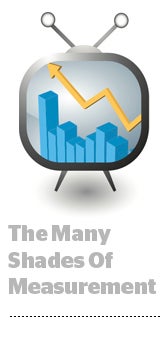 Consumers are subscribing to more streaming video-on-demand services these days, but “cord cutting” may not be as rampant as some would lead you to believe.
Consumers are subscribing to more streaming video-on-demand services these days, but “cord cutting” may not be as rampant as some would lead you to believe.
Because cable networks measure audience viewership differently than certain Nielsen metrics, the contrast tends to create an apples-to-oranges scenario when tracking overall viewership.
That’s why TV networks defend the claim that people are still tuning into their programming – even if Nielsen ratings don’t always reflect it.
For example, last week’s annual Nielsen TV home estimate for the 2016-17 TV season showed an increase for the first time in two years. The 118.4 million pay TV households it measured represented a 1.7% increase compared to the year before.
Yet amid these total TV increases, Nielsen also reported a 0.7% decrease in pay TV homes in its September estimate and a 0.5% decrease in cable network household penetration.
One cause of the ongoing obscurity is purely definitional: Nielsen’s national estimates qualify a “TV household” as a home with at least one operable TV or monitor with the ability to deliver video via a cable set-top box or satellite receiver and/or a broadband connection. In the past, broadband was not factored in.
“They’ve gone through changes in the last few years where they’ve changed the denominator for a non-TV household,” said Bruce Leichtman, president and principal analyst for broadband and media advisory firm Leichtman Research. “Even if it’s right, [the industry] can’t assume that a change in denominator indicates an actual increase in TV viewership.”
At the same time, a cable provider’s definition of what constitutes a subscriber may contradict individual programmers’ own distribution claims. For instance, reported losses at Scripps Interactive were compounded when AT&T shifted U-Verse video subscribers to DirecTV’s services upon its merger.
An Incomplete Snapshot
There are other discrepancies between Nielsen’s projections and the programmer’s own viewership tallies, according to industry experts.
Nielsen tracks residential household viewing, but cable networks measure paying subscribers. Within that subscriber count, it can include businesses, according to Leichtman.
Furthermore, individual and household viewership are measured in silos.
“Subscribing is done at the household level, while viewing is very much at the individual level,” Leichtman said. “When we do viewer research, we tend to cut it off at age 55. But we have to understand that one-third of American adults are over the age of 55, and they still subscribe [to pay TV services]. So the dynamics are very different between viewership and subscription.”
Another challenge is that Nielsen’s cable network estimates aren’t fully inclusive of OTT services. (Note: Nielsen says it would account for cable households that use such services as an adjunct within its universal estimates).
If more viewing shifts to set-top boxes, Nielsen ratings – at least in their current iteration – would be less comprehensive.
Counterintuitively, that might make planning and measurement more precise.
“Marketers would have to change their TV planning process to focus on the people and households they want to reach and abandon outdated GRP benchmarks,” explained Jim Nail, principal analyst at Forrester. “The programmers will need to get registration data and enhance it, but then advertisers could say, ‘I want to reach households with children under the age of 10,’ and presumably they could dynamically insert ads.”
Cord Cut Or a Shift To OTT?
The present dynamics in the pay TV space are not a sole function of consumer demand, argues Leichtman.
For instance, numerous reports would suggest consumers are severing ties with their cable TV bundles in favor of one of many SVOD services, which sometimes include those of the cable provider.
But cable and programmer audience momentum reflects a different reality, with the pace of lost subscribers slowing.
Charter Communications, for example, lost fewer pay TV subscribers in Q2 than it had in years past – 143,000 in Q2 FY2016 versus 163,000 in the same period the year before. Comcast lost 4,000 subscribers in Q2, a whopping improvement over the 69,000 it lost in the same quarter last year.
The top six cable companies lost a total of 225,000 video subscribers in Q2, compared to a loss of about 340,000 in the same period a year earlier, according to Leichtman Research.
Although cable companies are generally seeing a slower rate of loss in subscriptions than some of the telcos and satellite companies, it’s hard to compare because some satellite providers report their losses in combination with gains from OTT services, such as DISH and Sling TV.
“What I think this shows is it’s not just about consumer demand,” Leichtman added. “What is happening to a lot of [pay TV services] is a result of strategic decisions made by their parent companies. It’s not that consumers suddenly decided they wanted to cut the cord. Some of this is AT&T emphasizing DirecTV at the expense of U-Verse.”
And in some cases, like with DISH/Sling or Comcast/Watchable, customers are simply shifting their business to another part of a provider’s product stack, which might reflect poorly on the cable and pay TV provider’s overarching subscription business.
Clarification: Nielsen reports universal cable estimates by home penetration, not individual network subscribers as the piece originally stated. Nielsen notes the loss 0.7% loss recorded between September 2015 and September 2016 is because the percent of sample homes classified as “Cable Plus” was down more than the increase in estimated TV households. Nielsen says it has factored in broadband-only homes since 2014, so the 2015 – 2016 measure would not be impacted by this.













